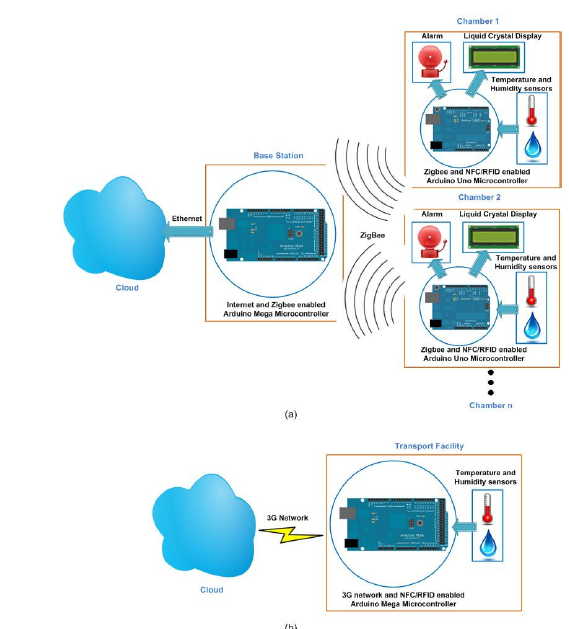
Project : There is a new evolution in technological advancement taking place called the Internet of Things (IoT). The IoT enables physical world objects in our surroundings to be connected to the Internet. For this idea to come to life, two architectures are required: the Sensing Entity in the environment which collects data and connects to the cloud and the Cloud Service that hosts the data. In particular, the combination of wireless sensor network for sensing and cloud computing for managing sensor data is becoming a popular intervention for the IoT era. The pharmaceutical cold chain requires controlled environmental conditions for the sensitive products in order for them to maintain their potency and fit for consumption. The monitoring of distribution process is the only assurance that a process has been successfully validated. The distribution process is so critical that anomaly at any point will result in the process being no longer valid. Taking the cold chain monitoring to IoT and using its benefits and power will result in better management and product handling in the cold chain. In this paper, Arduino based wireless sensor network for storage and logistics (land and sea) is presented and integrated with Xively cloud service to offer a real-time and innovative solution for pharmaceutical cold chain monitoring.
components :LCD, Arduino mega, Ethernet Shield
The Ethernet shield is the simplest way to connect the Arduino to the Internet. It uses a RJ45 cable to connect to the network. The shield is based on WIZnet W5100 Ethernet chip and provides a network stack capable of both TCP and UDP. It also supports up to 4 simultaneous socket connections. For the Ethernet shield to work well with the Arduino Mega, additional wiring is required. This is not the case with the Arduino Uno. The Arduino communicates with both the W5100 and SD card (on the Ethernet shield) using the SPI bus. The SPI bus is on digital pins 10, 11, 12, and 13 on Uno and pins 50, 51 and 52 on Mega. On both boards, pin 10 is used for selecting the W5100 and pin 4 for the SD card. On Mega, pin 53 (hardware SS pin) is not used for selecting either the W5100 or the SD card but it is kept as an output otherwise SPI interface does not work. W5100 and SD card share the SPI bus so only one is active at a time. Hence the pins 11, 12, and 13 on the Ethernet shield were wired up to pins 50, 51, and 52 on Mega respectively.
system configuration :
hardware configuration:

– Authors : Abel Avitesh Chandra, Jong Sang Back, Seong Ro Lee
– Source : The Journal of The Korean Institute of Communication Sciences 39(9), 2014.9, 828-840 (13 pages)


COMMENTS